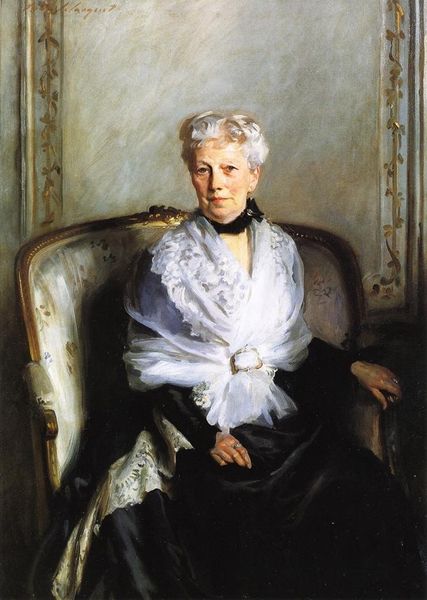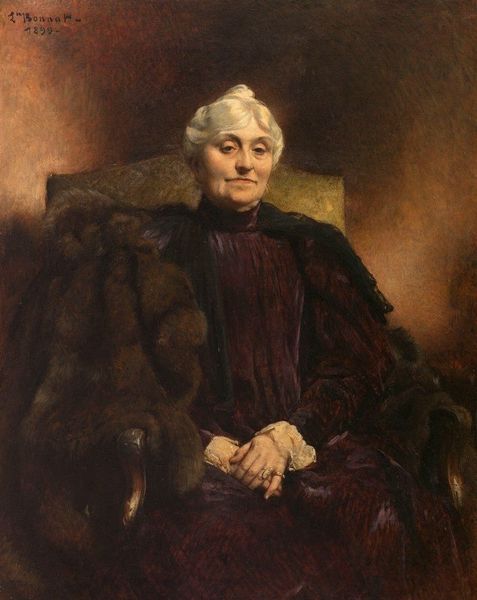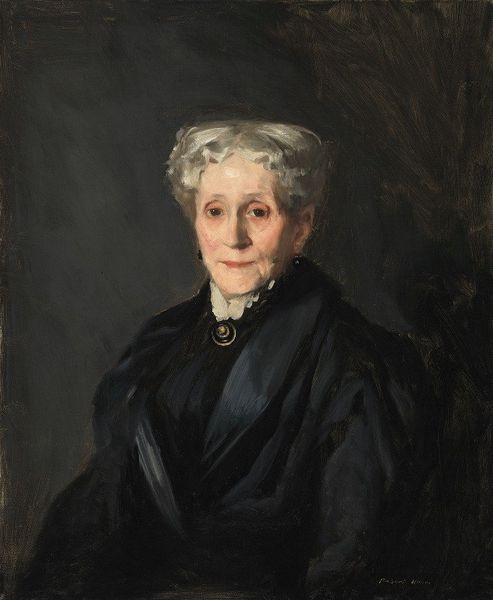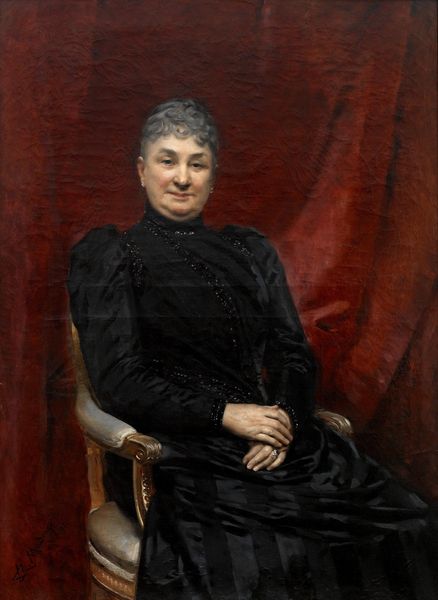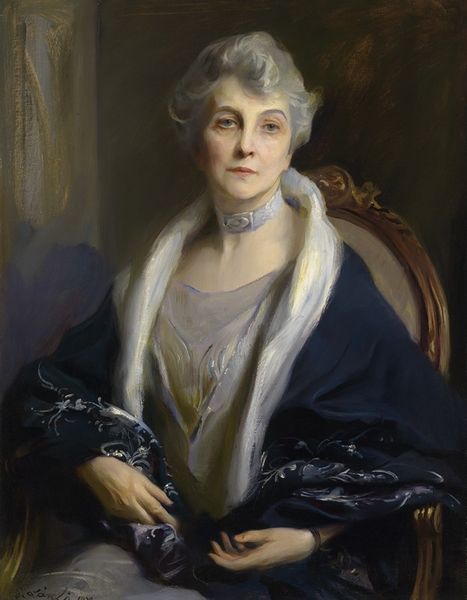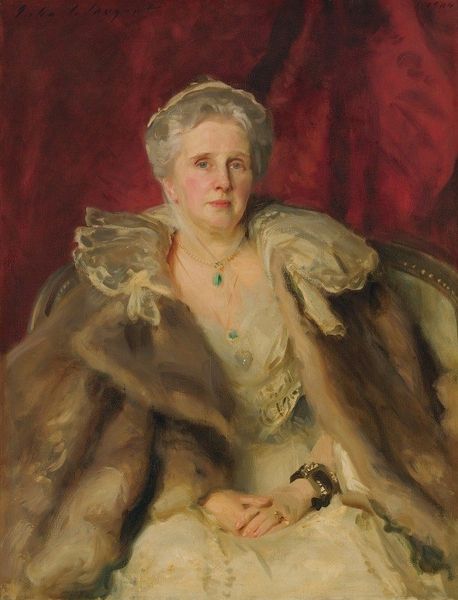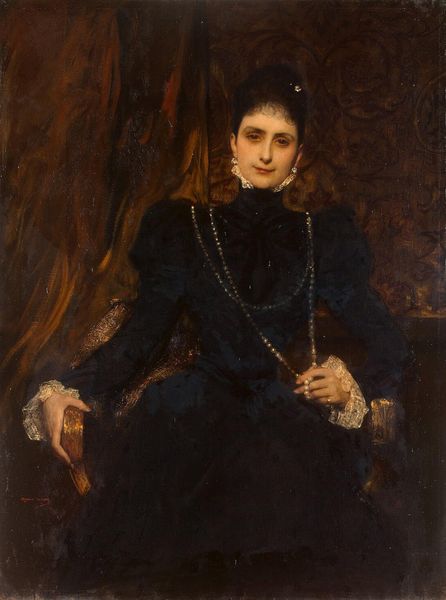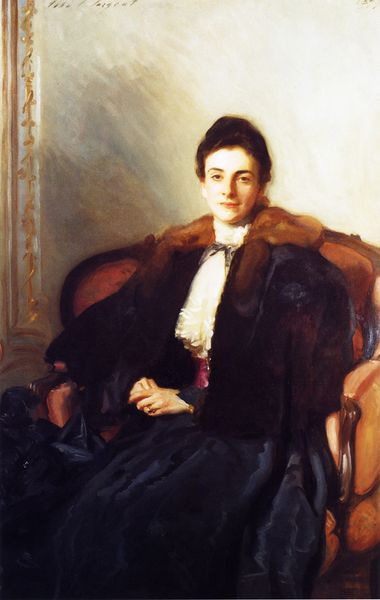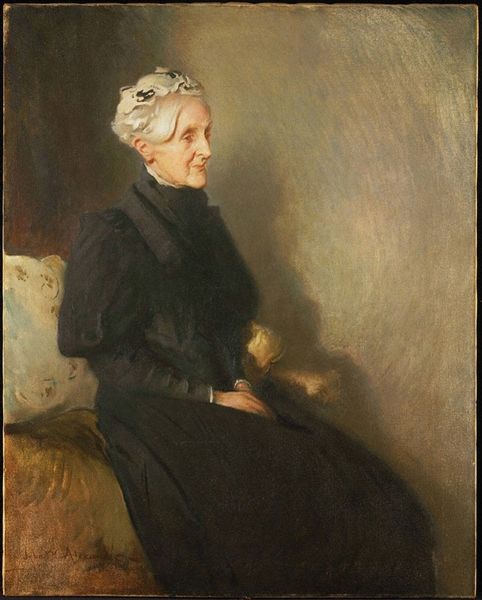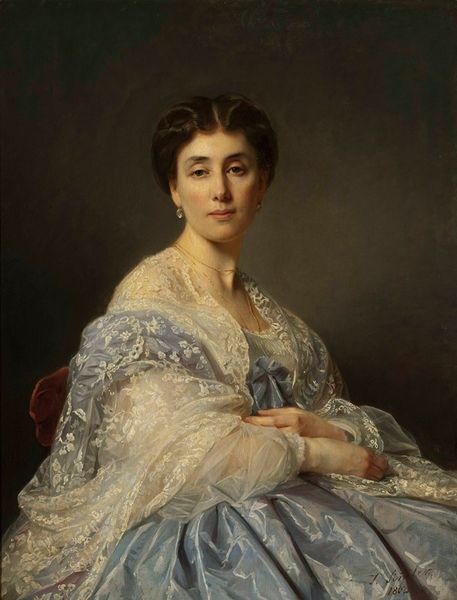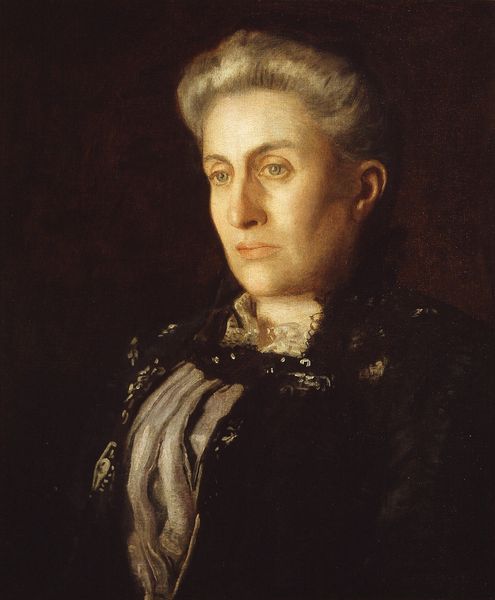
Copyright: Public Domain: Artvee
Curator: Looking at this portrait, I feel immediately drawn to its serene yet commanding presence. There's a stillness that speaks volumes. Editor: Indeed. What we're observing here is John Singer Sargent's "Ellen Peabody Endicott," painted in 1901. It's a masterful oil painting capturing the likeness of a woman who clearly holds a distinguished position in society. Curator: Her attire is telling. The stark contrast between the black dress and the delicate white lace suggests a duality – perhaps a life lived both within and against societal expectations. The lace, in particular, feels like a symbol of status, of carefully constructed femininity. Editor: Absolutely. The painting arrives during a period of considerable social and political change, particularly concerning women's roles. Sargent, as a portraitist, was keenly aware of how clothing and setting communicated social standing and aspiration. The somber color palette possibly echoes the serious tone often associated with portraits of women in positions of power during that time. Curator: I’m intrigued by her gaze. It's direct, almost challenging, yet there's a hint of weariness. It reminds me how portraits served as powerful memory objects for families, imbued with emotional weight that transcends mere representation. What societal messages might be read through the portrait’s circulation and reception at the time? Editor: Well, Sargent occupied an interesting space within the art world. While celebrated by the establishment, he also engaged with impressionistic techniques, as we can see in the loose brushwork and attention to light. His portraits, like this one, became valuable social currency, signifying the sitter's elevated status. To your earlier point, this reminds me that this was a moment of re-evaluating gender roles, especially when we look at how Sargent balances intimacy with that visual rhetoric of female accomplishment in public life. Curator: That play of light and shadow does bring out the psychological complexity of the sitter. It reminds us of the sitter's humanity in relation to the codes of status that define her place in that society. It almost evokes a conversation of interior life. Editor: So while ostensibly a record of a life lived at the turn of the century, Sargent's portrait acts also as an indicator of the visual forces constructing identities, influencing social meaning, and establishing an emotional connection that viewers can access today. Curator: Yes, thinking about the visual traditions, the history that an image like this embodies, deepens how it resonates so vividly even now.
Comments
No comments
Be the first to comment and join the conversation on the ultimate creative platform.
